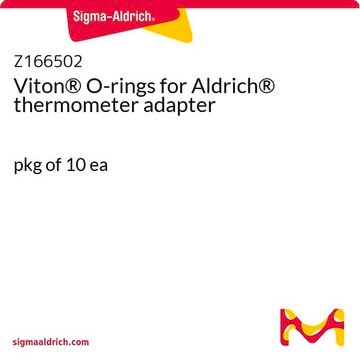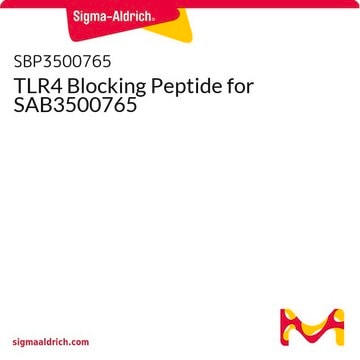MAB874
Anti-Papillomavirus Antibody, 16, 18 E6 protein, clone C1P5
clone C1P5, Chemicon®, from mouse
Synonym(s):
HPV
Sign Into View Organizational & Contract Pricing
All Photos(1)
About This Item
UNSPSC Code:
12352203
eCl@ss:
32160702
NACRES:
NA.41
Recommended Products
biological source
mouse
Quality Level
antibody form
purified immunoglobulin
antibody product type
primary antibodies
clone
C1P5, monoclonal
species reactivity
human
manufacturer/tradename
Chemicon®
technique(s)
immunohistochemistry: suitable
western blot: suitable
isotype
IgG
shipped in
wet ice
General description
Human papilloma viruses (HPVs) can be classified as either high risk or low risk according to their association with cancer. HPV16 and HPV18 are the most common of the high risk group while HPV6 and HPV11 are among the low risk types. Approximately 90% of cervical cancers contain HPV DNA of the high risk types. Mutational analysis have shown that the E6 and E7 genes of the high risk HPVs are necessary and sufficient for HPV transforming function. The specific interactions of the E6 and E7 proteins with p53 and pRB, respectively, correlate with HPV high and low risk classifications. The high risk HPV E7 proteins bind to pRB with a higher affinity than do the low risk HPV proteins, and only the high risk HPV E6 proteins form detectable complexes with p53 in vitro.
Specificity
Recognizes Human papilloma virus type 18 early E6 protein. The antibody cross reacts with E6 protein from HPV type 16.
Immunogen
C1P5 was made against HPV type 18 E6 protein produced in bacteria.
Epitope: 16, 18 E6 protein
Application
Detect Papillomavirus using this Anti-Papillomavirus Antibody, 16, 18 E6 protein, clone C1P5 validated for use in IH & WB.
Immunoblotting: Reactive with a 16.5-18 kDa band in reduced westerns of overexpressing cells lines corresponding to HPV E6 protein in cells derived from human cervical carcinoma. {Banks, et al 1987}
Immunohistochemistry: Shows reactivity on formalin fixed tissue. Dilute with buffer pH 7.5-8.0 to desired working volumes. For extensive dilution, protein containing or other stabilizing medium should be used.
Immunopreciptiation: Immunoprecipiates 16.5 kDa band from human cervical carcinoma extracts {Banks, et al, 1987}.
Final working dilutions must be determined by end user.
Immunohistochemistry: Shows reactivity on formalin fixed tissue. Dilute with buffer pH 7.5-8.0 to desired working volumes. For extensive dilution, protein containing or other stabilizing medium should be used.
Immunopreciptiation: Immunoprecipiates 16.5 kDa band from human cervical carcinoma extracts {Banks, et al, 1987}.
Final working dilutions must be determined by end user.
Research Category
Infectious Diseases
Infectious Diseases
Research Sub Category
Infectious Diseases - Viral
Infectious Diseases - Viral
Target description
16.5-18 kDa
Physical form
Format: Purified
Protein A Purified mouse immunoglobulin in 20 mM sodium phosphate, 250 mM NaCl, pH. 7.6, with 0.1% sodium azide as a preservative.
Protein A purified
Storage and Stability
Maintain for 1 year at 2–8°C from date of shipment. For maximum recovery of product, centrifuge the original vial after thawing and prior to removing the cap.
Analysis Note
Control
Human cervical carcinoma extract
Human cervical carcinoma extract
Other Notes
Concentration: Please refer to the Certificate of Analysis for the lot-specific concentration.
Legal Information
CHEMICON is a registered trademark of Merck KGaA, Darmstadt, Germany
Disclaimer
Unless otherwise stated in our catalog or other company documentation accompanying the product(s), our products are intended for research use only and are not to be used for any other purpose, which includes but is not limited to, unauthorized commercial uses, in vitro diagnostic uses, ex vivo or in vivo therapeutic uses or any type of consumption or application to humans or animals.
Not finding the right product?
Try our Product Selector Tool.
Storage Class Code
12 - Non Combustible Liquids
WGK
WGK 2
Flash Point(F)
Not applicable
Flash Point(C)
Not applicable
Certificates of Analysis (COA)
Search for Certificates of Analysis (COA) by entering the products Lot/Batch Number. Lot and Batch Numbers can be found on a product’s label following the words ‘Lot’ or ‘Batch’.
Already Own This Product?
Find documentation for the products that you have recently purchased in the Document Library.
Ishita Gupta et al.
Pathogens (Basel, Switzerland), 9(6) (2020-06-12)
Colorectal cancer (CRC) is a common malignancy with a high mortality rate worldwide. It is a complex, multifactorial disease that is strongly impacted by both hereditary and environmental factors. The role of microbes (e.g., viruses) in the pathogenesis of CRC
Maurizio Chiriva-Internati et al.
European journal of immunology, 32(1), 30-38 (2001-12-26)
Adeno-associated virus (AAV) is able to efficiently deliver a cytokine gene into dendritic cells (DC). Improvements in T cell priming by DC might be effected by the delivery of antigen genes into DC, resulting in continuous protein expression, as most
L Banks et al.
The Journal of general virology, 68 ( Pt 5), 1351-1359 (1987-05-01)
We recently reported the expression of human papillomavirus type 18 (HPV-18) E6 protein in bacteria and the production of anti-E6 polyclonal antibodies. This work has now been extended with the production of a panel of monoclonal antibodies against the HPV-18
Ye-Fei Chang et al.
Frontiers in oncology, 11, 718781-718781 (2021-10-26)
Cervical cancer, which is significantly associated with high-risk human papillomavirus (HPV) infection, currently ranks the fourth most common cancer among women worldwide. Previous literature reported that the elevated expression of G6PD was significantly correlated with the occurrence and deterioration of
A D Darnel et al.
Clinical microbiology and infection : the official publication of the European Society of Clinical Microbiology and Infectious Diseases, 16(3), 262-266 (2009-05-15)
Infection by high-risk human papillomaviruses (HPVs) is considered to be the central cause of invasive cervical cancer. Previously reported studies have shown that Id genes regulate cell invasion and metastasis in several human carcinomas including cervical cancer. In order to
Our team of scientists has experience in all areas of research including Life Science, Material Science, Chemical Synthesis, Chromatography, Analytical and many others.
Contact Technical Service



![2-(2-Azabicyclo[2.2.1]hept-2-yl)ethanol AldrichCPR](/deepweb/assets/sigmaaldrich/product/structures/325/689/6a6eb812-ddc3-4fe3-9dc4-ad0b5caedd35/640/6a6eb812-ddc3-4fe3-9dc4-ad0b5caedd35.png)


